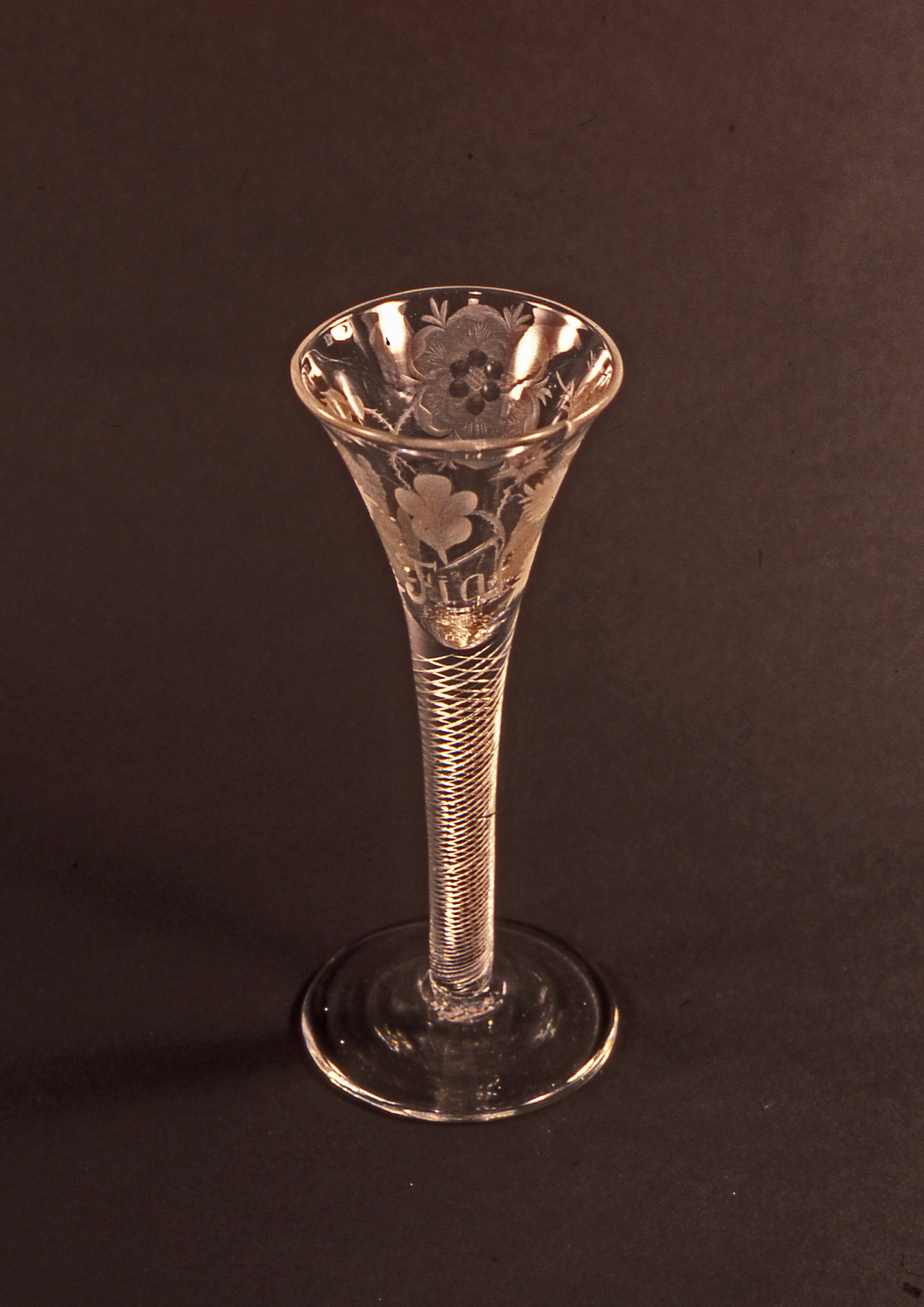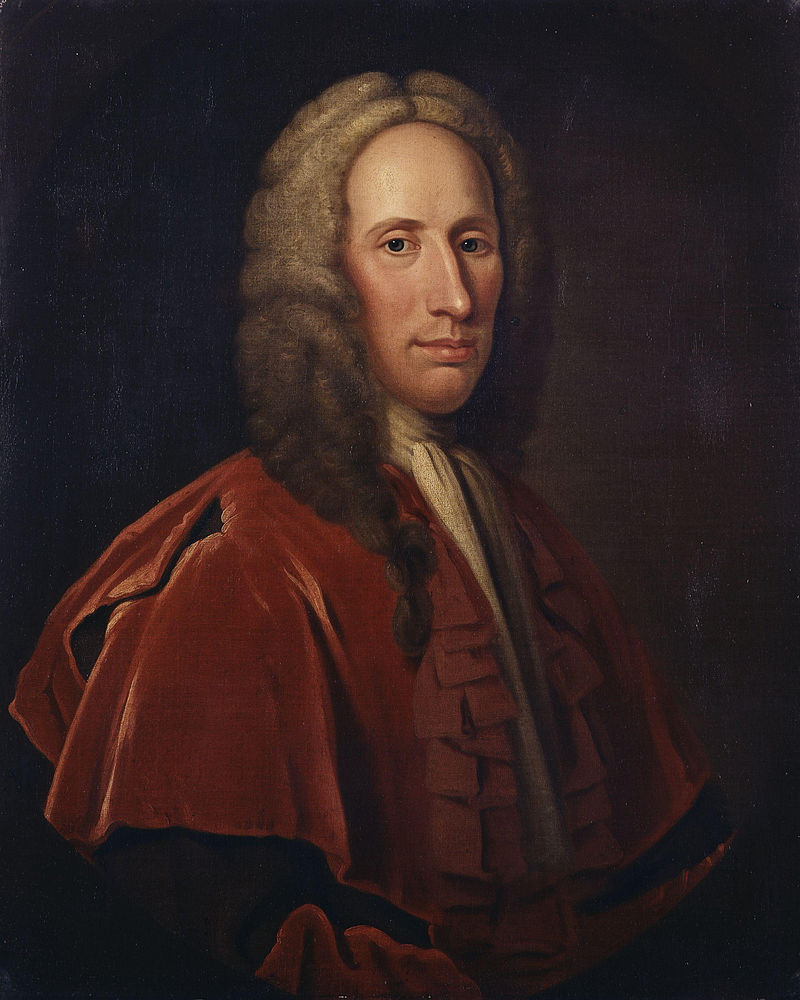Traditionally on Burns night we toast the Bard with whisky, we recite the Selkirk grace[1] and we address a haggis. Did addressing a Hanoverian in 1689 lead to the failure of the Jacobite rebellion in 1746?
Some hae meat and canna eat,
And some wad eat that want it,
But we hae meat and we can eat,
Sae let the Lord be Thankit!
Let’s start our Burns night celebrations with the social lubrication of whisky if consumed in moderation. The West Highland Museum has some marvellous Jacobite glasses and it has modern replicas for sale in the Museum’s shop.

Ferintosh [2] page 107
Thee, Ferintosh! oh sadly lost,
Scotland lament frae coast to coast!
Now colic grips, an’ barkin’ hoast
May kill us a’;
For loyal Forbes’ charter’d boast
Is taen awa’!”
Oral tradition has it that there are remains of a distillery dating back to the 18th Century at Mulchaich Farm, located in the district of Ferintosh on the Black Isle. The distillery site is about 200m NW of the farm and was previously unrecorded.
“Mulcach” was an important settlement first mentioned in the Exchequer Rolls of 1456. Mulchaic appears again in 1670 when an act is passed in favour of John Forbes of Culloden granting him the right to hold an annual fair at Mulchaich.
The MacDonell of Keppoch’s land had been forfeited with the actions against the Stewart Crown of James I (Battle of Split Allegiances1429, Battle of Inverlochy 1431) and the death of the first Lord of Lochaber and 1st Chief of Keppoch Alasdair Carrach in 1443. The Keppoch MacDonalds had invited MacKinnon onto Keppoch land before 1443 (Blarenofingone/Field of MacKinnon) to check the power of Cameron and MacKintosh who had abandoned the lord of the isles and crossed the battlefield to support James I’s royalist army in 1429.
Keppoch’s forfeited lands were then kept via cold steel in the shape of Lochaber axes and the Claymore. Alasdair was the youngest son of Eoin mac dhomnaill and Princess Margaret Stewart of Angus the daughter of King Robert ii. Duncan Forbes in 1689 and his son “Bumper John” declared support for William iii and Queen Mary the daughter of the Stewarts King James vii and ii. When a Clans lands were forfeited. it was the expected that the new benefactor would clear the previous land owners. On the 4th Aug 1688 some 245 years after Malcolm MacKintosh had been first granted Keppoch in 1443, Lachlan MacKintosh appeared with MacKenzie of Suddie and 1500 troops to eject Keppoch and their supporters and enact his feudal title. Lachlan faced off against Colla nam bo (Coll of the Cows)16th of Keppoch and 700 MacDonell MacKinnon MacMartin and Cameron at Maol Ruadh above Roybridge. The Cameron of Lochiel Memoirs state that the battle was fierce and bloody and that Mackintosh had the misfortune to be defeated. Many of Mackintosh’s followers were slain, including four of the leaders, as well as Mackenzie of Suddie who was mortally wounded. Great numbers were also taken prisoner. Lachlan MacKintosh the MacKintosh was taken prison and the very next day Mac A’Phersein who did not offer support for the battle turned up to Keppoch in numbers to demand Lachlan’s release. Colla Nam Bo not wanting to fight another battle in quick succession relinquished Lachlan. Lachlan was now under the protection of the MacPhersons and he pleaded not to be embarrassed and taken to Cluny MacPherson within 2 miles of Cluny Lachlan was free to return to his lands. The very next year in April 1689, Colla Nam Bo took circa 900 men of Lochaber up to inverness and put it under siege. For lifting the siege, he demanded 4k merks of silver and a silk scarf, this was near the start of the 1689 Jacobite Rebellion and Viscount Dundee was incensed with his actions. Later In the rebellion Colla nam bo would burn down Dunachton and Ruthven barracks belonging to MacKintosh and be accused of settling scores under the guise of the Rebellion. After the siege Colla took his men up past Dingwall and into the Ferintosh estate in the parish of Urquhart to burn down the Ferintosh distillery as the owner Duncan Forbes of Culloden and his son “Bumper John” had come out in support of the Glorious Revolution of William of Orange Nassau and Queen Mary Stuart. The English treasury got wind of the devastation carried out by Keppoch on Forbes’s land and in 1690 Ferintosh became the first legal distillery with an Act in Parliament. Due to the support from Forbes of the new monarchy the distillery did not need to pay any taxes from 1690 until the washback tax came in to fruition 1784.
Ferintosh became so popular that at one stage it was producing more whisky than all other distilleries put together. The distilleries at Ferintosh could produce whisky cheaper for the consumer due to the leniency on taxation from 1690 until 1784 and it made the Forbes family very wealthy as they were given £20k in compensation for the washback tax and production of eight distilleries on site stopped in 1785. Duncan Forbes by 1739 (10 November 1685 – 10 December 1747) was Lord President and senior Scottish legal officer. During that year the chieftain Norman MacLeod of MacLeod and Sir Alexander MacDonald of Sleat made a horrific decision to round up crofters and sell them at £3 a head into indentured slavery in the Americas. During a violent storm “William” known as the “Soitheach na Daoine” (Ship of the People) becomes damaged and is forced to land at Donaghadee Ireland on 20th October 1739. The 96 prisoners escaped into the countryside and the local magistrates were horrified to find out about this cruel endeavour where people from Harris and Skye were forced into the William under extreme physical force. Duncan Forbes (Lord Culloden) got wind of this sale of tenants into slavery and threatened to prosecute MacLeod and MacDonald who had Jacobite sympathies, but instead Lord Culloden signed them to anti Jacobite laws. At the time Lord MacDonald could field 3000 Highlanders and may have been enough to win back the throne for the Stewart dynasty.

Charles Edward Stewart sequestered Duncan Forbes house (Lord Culloden) at Culloden for 3 days during the battle at Drunmossie moor 16th April 1746. Alasdair MacColla son of Colla had urged the prince to reconsider the chosen battlefield for another. Bonnie Prince Charlie was confident that the Highland charge would succeed. Alasdair was hit early on to his right arm and in the stomach with his son Angus Ban of Insch dragging his dying father from the battlefield to a local bothy. The bothy filled with injured Highlanders was set alight after the battle by red coats. It is said that after the Battle of Culloden at Drunmossie Moor Bonnie Prince Charlie consoled himself with a bottle of Ferintosh whisky.
In 1760, Forbes enlarged the distillery and built another additional three distilleries in Ferintosh. Complaints throughout Scotland to the unfair advantage that Ferintosh had resulted in Rabbie writing about the demise in “Scotch Drink” and “The author’s earnest cry and prayer”.
A Burns night would not be complete without a Haggis.
“A haggis! A HAGGIS!” says Private McPhee;
“The brawest big haggis I ever did see.
And think! It’s the morn when fond, memory turns
Tae haggis and whuskey,—the Birthday o’ Burns
We maun find a dram; then we’ll ca’ in the rest
O’ the lads and well hae a Burns’ Nicht wi’ the best.”
A Lochaber lassie was chasing Haggi around the Meall an T and tripped hurting her arm and had to go to hospital for an x-ray, as she was sitting waiting to be seen, the lad next to me says,” Fair fae yer honest sonsie face! Great chieftain o’ the puddin race!!” I was like, eh?!?!., I turned my head round to the pudding lady sat on my other side, she said, ” Wee, sleekit, cow’rin, tim’rous beastie, O, what a panic’s in thy breastie!” , As I grabbed the next Doc walking past I said, “here mate is this the psychiatric ward?
No this is the burns unit!
[1] The Complete works of Robert Burns Boston Phillips Sampson and Company 1858 “The Selkirk Grace” page 202
[2] ibid page 107
[3] Drummond, John; Macknight, James (1842). Memoirs of Sir Ewen Cameron of Locheill, Chief of the Clan Cameron : with an introductory account of the history and antiquities of that family and of the neighbouring clans. Edinburgh: Printed for the Maitland Club. pp. 229–230.
[4] http://www.bernerayhistorical.com/soitheach-na-daoine….
[5] The Haggis of Private McPhee July 1st 1916 Robert W Service
Images:
[1] Jacobite glass on display at West Highland Museum
[2] Duncan Forbes, Lord Culloden
Caomhìn Mac Fhionghuin (Kevin MacKinnon)
